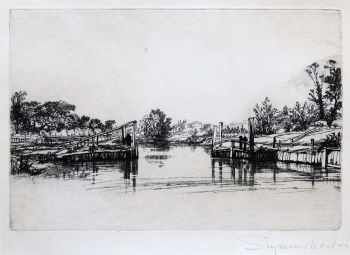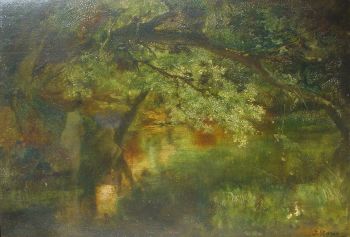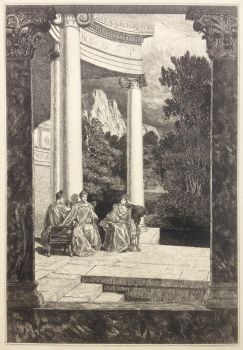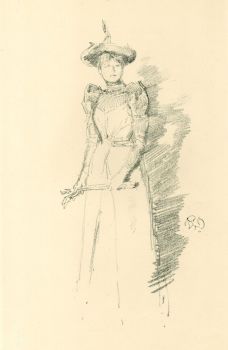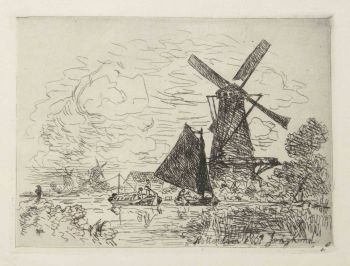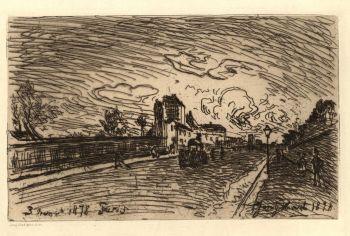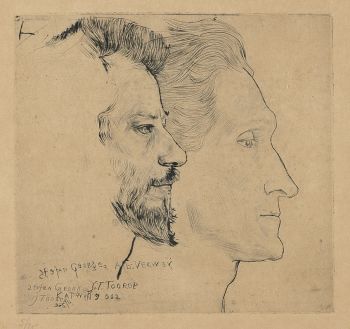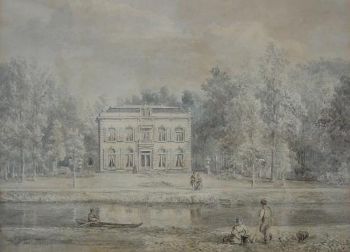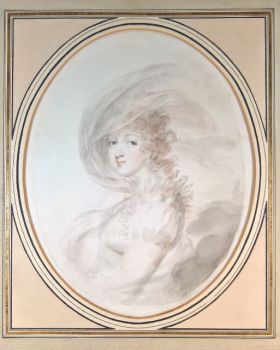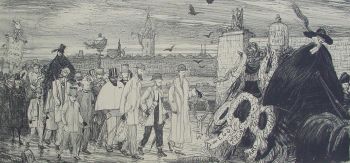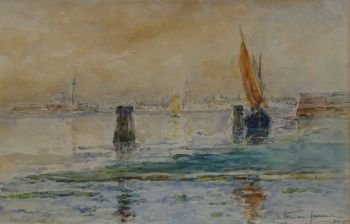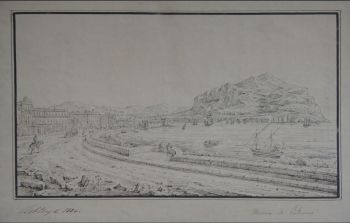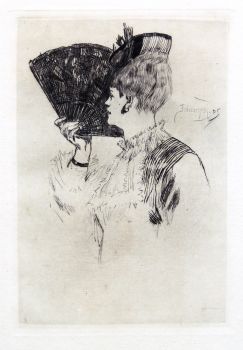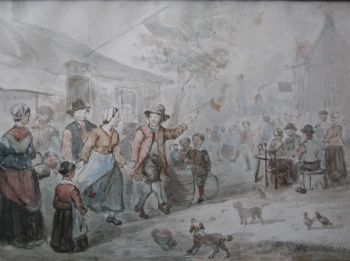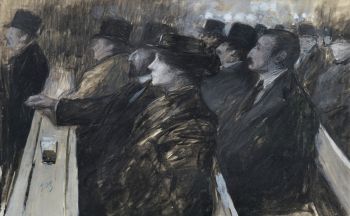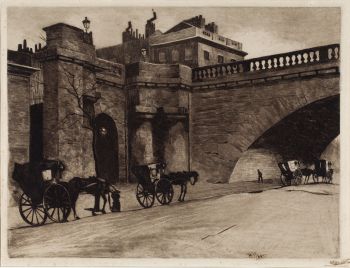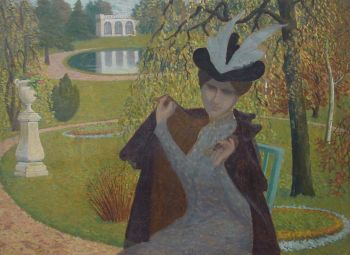About the artist
Francis Seymour Haden (1818, London – 1910) was an English surgeon, who became famous as an etcher. He studied at University College, London, and at the Sorbonne, Paris, until 1840. He entered the College of Surgeons in London in 1842. In 1843 and 1844 he travelled to Italy and made his first sketches from nature. Haden was an autodidact. Between 1845 and 1848 he studied portfolios of prints belonging to a second-hand dealer named Love, who had a shop in London. He studied the works of the great original engravers, Albrecht Dürer, Lucas van Leyden and Rembrandt. Haden's printmaking was stimulated by his much younger brother-in-law, James McNeill Whistler. In 1855 Haden and Whistler collaborated on a series of etchings of the Thames. Their relationship and project did not last. Haden became the foremost British exponent of etching and brought about its revival in England. In 1880 he founded the Royal Society of Painter-Etchers and Engravers. Haden's own plates were very individual. He preferred to work directly onto the plate in front of the subject. A catalogue of his works was begun by Sir William Drake and completed by Harrington in 1880. During later years Haden also began practicing mezzotint engraving with the same succes he had achieved in pure etching and in drypoint. He wrote a monograph about Rembrandt The Etched Work of Rembrandt: True and False (1895). He received the Grand Prix, Paris, in 1889 and 1900, and was made a member of the Institut de France, Académie des Beaux-Arts and Société des Artistes Français. He was knighted in 1894.

